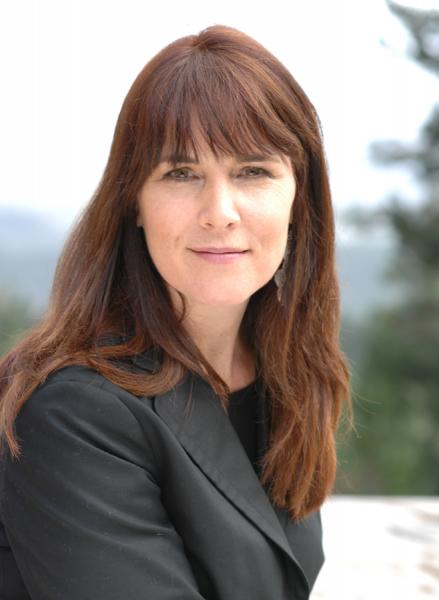How to leverage word of mouth in senior living
The statistics are compelling and never fail to show the power of social media—a rising, ever-changing communication medium. More than 500 million people (one of every 13 people on Earth) are Facebook users. Fifty percent of these users log in every day. Simply stated, word-of-mouth communication has gone global and has spread across cultures and generations.
For senior living communities, social media is a “brand” new world adding a new dimension to the marketing mix and a “brave” new world for communities to share their story, listen to what audiences are saying and directly engage with them. The online and mobile technologies that make social media possible have strengthened the power of word of mouth—a key influencer in the decision-making process.
Before social media, word-of-mouth influence was limited to a small group of friends, family members and work associates. Today, in the brand-new world of social media, these same conversations about a senior living community are being communicated to hundreds if not thousands of consumers through channels such as Facebook, Twitter, YouTube, LinkedIn and a host of blogs and review websites.
 |
| Gabrielle Windsor |
Research from the Pew Research Center and other organizations consistently show that the number of seniors using social media continues to rise dramatically. Besides reconnecting with old friends and staying in touch with family, they find it a dependable platform for sharing information and stating their views on products and services with not only friends, but with anyone in their peer group. Social media has become a marketplace where consumers trust one another’s thoughts and opinions.
In the scope of the sensitive nature of selecting a senior living community, families are more likely to go online to see reviews and discussions posted by those who are connected to the community before they schedule a visit. This is where social media facilitates the sharing of personal and emotional journeys expressed by family members who are deciding where their parent or spouse will reside and receive care. Again, word-of-mouth plays an important role in the senior living consideration cycle. This interaction leads to “crowd-sourcing” influence—a concept that enables senior living communities to join the conversations taking place among its audiences.
WHERE DOES SOCIAL MEDIA FIT?
Social media fits nicely into all aspects driving the senior living consideration cycle (classic purchase funnel) that begins with awareness, familiarity and consideration, which hopefully leads to purchase and referrals. It goes beyond the function of senior living marketing and is useful in customer service, research, public relations and other corporate functions.
For example, at Vintage Senior Living, social media is used as a sharing platform to view the company’s vibrant culture. A corporate structure is in place for the family of 23 communities to provide the marketing team with relevant stories that give a glimpse into the appealing lifestyle that Vintage residents experience on a daily basis.
This window comes in the form of “brand outposts” such as the corporate blog, Yelp and Flickr and the above-mentioned social media channels. It showcases the communities and gives audiences the opportunity to see the provider’s distinctive care, accommodations, social activities, wellness programs and overall value system. These channels are easily accessible to audiences online and via mobile devices (e.g., smartphones) with content designed to encourage discussion and promote engagement. A primary goal of sharing these stories is to change consumer perceptions and educate audiences about the vibrant lifestyle that residents and families enjoy.
LAY THE GROUNDWORK
A social media plan needs to be based on a senior living community’s primary business objectives, which can involve listening, learning, informing/educating and engaging. Establishing a set of associated metrics and having the tools in place to measure these metrics is fundamental for ensuring the clear pursuit of the objectives.
For example, one metric might be to drive traffic to the community’s website and have a mechanism in place to measure this online traffic. Measurement helps prioritize the expenditure of time and energy, thus keeping the marketing efforts focused on what creates value for the community.
The next step is to decide on a messaging strategy that will define the practice of producing content (communicating) and conducting engagement (listening and responding). This strategy needs to be in concert with the overall senior living community’s brand.
Budgets and the editorial process for content creation and distribution need to be established along with creating accounts on social media channels. Selecting channels that appeal to the audience will go a long way in fostering engagement.
INTEGRATING BRAND TOUCH POINTS
Social media offers a series of touch points that shape influence and basically announce where we are, who we are and extend the invitation that we would like to hear from you. As a brand builder, it optimizes the volume of inquiry traffic and the value of consumer engagement. Cross linking the senior living community’s social media channels on its website, blog, emails and all other channels maximizes its power and amplifies these touch points to expand this vital influence. For example, a community’s Facebook page can list its blog, Twitter and YouTube channels in a column to encourage Facebook visitors to engage in other channels.
A SHARP, BRIGHT TOOL
Social media has become an important function in the overall marketing toolbox, which includes conventional tools such as print and online advertising. The technology provides a host of measuring tools that record impressions and interaction rates as well as determinethe user and the city he or she resides in. This engagement helps generate referrals, drives traffic to the senior living community’s website and contributes to the integrated system of producing hard leads in the form of brochure requests, tour requests and visits.
Gabrielle Windsor is the Director of Marketing and Communications for Vintage Senior Living. For more information, call (949) 719-4080, email marketing@vintagesenior.com or visit www.vintagesenior.com. To contact through social media, access linkedin.com/in/gabriellewindsoror twitter.com/ocred99.
Related Articles
Topics: Articles , Facility management , Technology & IT











